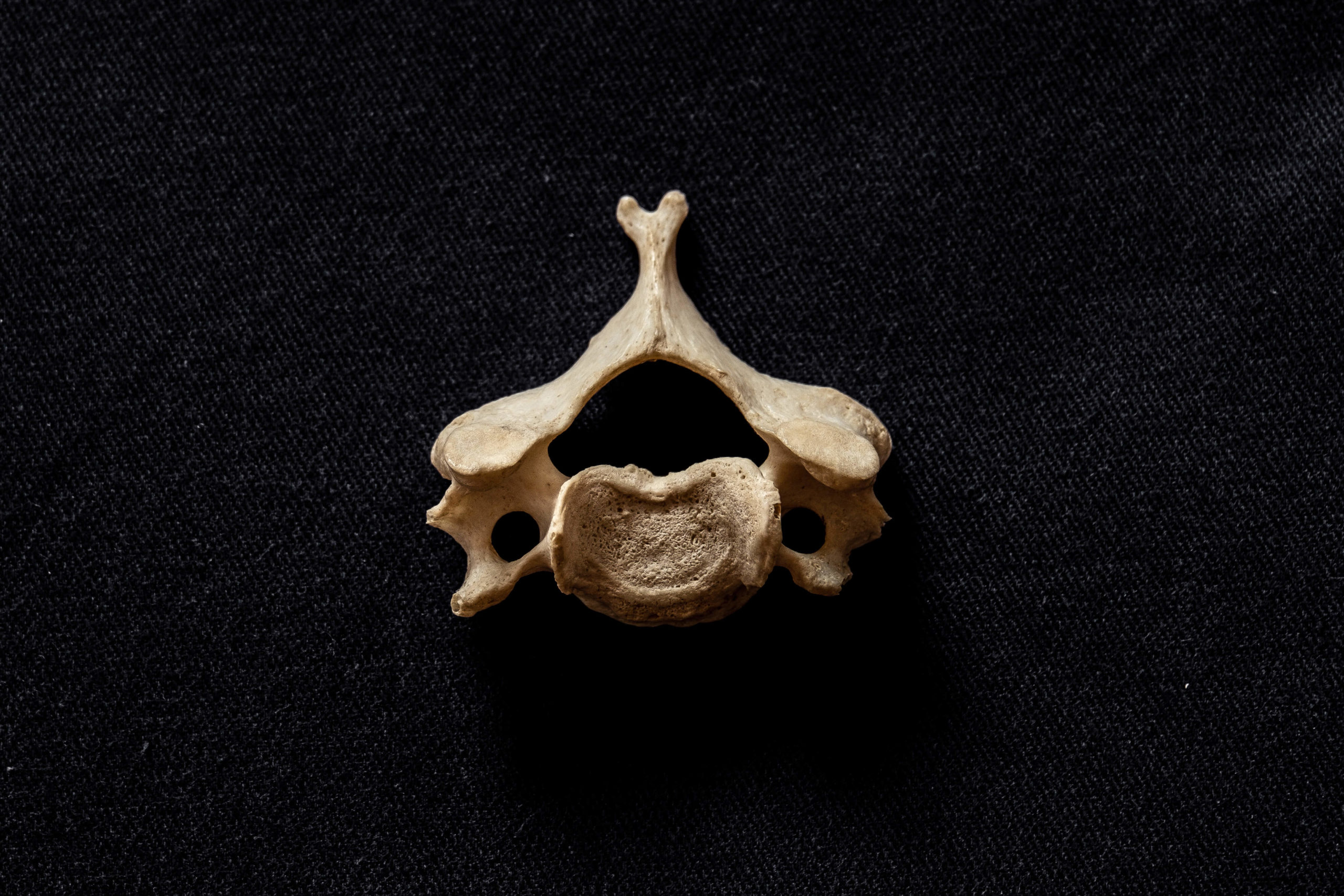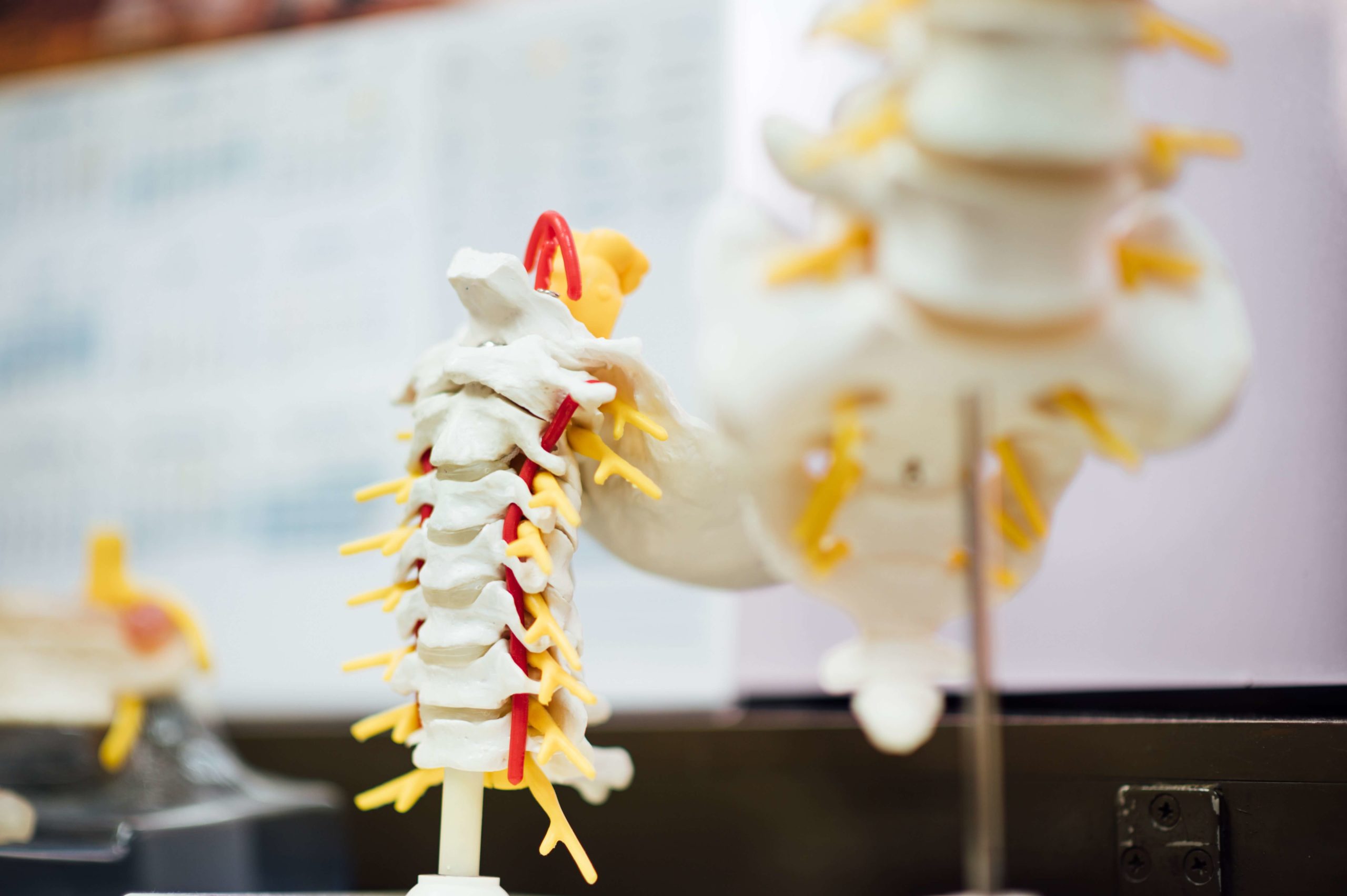
May 20, 2022 | Glossary
The Musculoskeletal System: A Glossary
The musculoskeletal system is made up of bones, cartilage, ligaments, tendons, and connective tissue...
Mon - Fri: 8:00 a.m. to 5:00 p.m
Oct 13, 2021 | Treatments

Foraminal stenosis is a type of spinal stenosis that affects many adults. In fact, almost half of all adults middle-aged and older experience some type of spinal stenosis and pain caused by pinched nerves. But what is foraminal stenosis and what’s the most effective foraminal stenosis treatment? Keep reading to learn everything you need to know about this condition as well as how Biscup Spine, located in Florida, can help you find relief.
Foraminal stenosis is a condition in which the openings between the bones in your spine begin to tighten or narrow. These openings are known as the foramen, hence the name foraminal stenosis. The foramen are what allow nerves from the spinal cord to reach your arms, legs, and other parts of your body. In a normal spine, the foramen have enough room for nerve roots to easily fit through them. However, a variety of issues can cause the foramen to close in, reducing the space in them for nerve roots, and pinching the nerves.
When a spinal nerve becomes pinched, it can lead to radiculopathy, which causes pain, numbness, and weakness in the part of the body that the nerve serves. For example, if the sciatic nerve becomes pinched, the patient would experience symptoms of sciatica.
It should be noted that some people with foraminal stenosis don’t experience symptoms and others experience symptoms that come and go rather than being constant.
Keep reading to learn more about the symptoms and causes of foraminal stenosis, as well as the best foraminal stenosis treatment.
Symptoms of foraminal stenosis depend on which part of your spine is affected, but we’ll be focusing on symptoms caused by stenosis in the lumbar spine. The lumbar spine, or the lower back, is the section of the spine that is most likely to be affected by foraminal stenosis as well as a variety of other spine conditions. This is due to the fact that the lumbar spine takes on most of the stress and load placed on your spine in normal activities.
When the foramen of your lower back begin to narrow, this is known as lumbar stenosis. Lumbar stenosis symptoms include pain, tingling, numbness, and weakness in the buttock, leg, and foot. This is also known as sciatica. The pain caused by lumbar stenosis may also worsen with activities like bending, twisting, reaching, coughing, or sneezing. Effective foraminal stenosis treatment must treat the cause of these symptoms, rather than simply treating the symptoms themselves.
One of the most common causes of foraminal stenosis is aging. People are more likely to develop this condition as they get older due to the wear and tear of daily living. This wear and tear can lead to changes in the spine that may cause the foramen to narrow.
The following are more common causes of foraminal stenosis:
The following are the most common treatments of foraminal stenosis. The only issue with these treatments is that, excluding surgical treatments that treat the narrowing of the foramen, these treatments only address the symptoms of the narrowing. This is not an effective or lasting way to treat foraminal stenosis.
Rest is commonly recommended for those experiencing pain, numbness, or weakness as a result of a pinched nerve. However, resting for too long can actually worsen foraminal stenosis symptoms. Patients may also be told to avoid movements that cause pain, but not to avoid movement altogether. Using hot and cold packs may be recommended in addition to this. Unfortunately, changing your activity level does not address the narrowing of the foramen.
Physical therapy is a great way to stabilize your spine and improve your range of motion. It may also be able to open up space in the spine for your nerve roots to pass through. It’s well known that strengthening the muscles that support your spine reduces stress on the spine and prevents future damage. However, if this doesn’t provide lasting relief from foraminal stenosis pain, surgery may be recommended.
There are a variety of medications used for foraminal stenosis treatment, such as:
If conservative treatments fail to provide relief from foraminal stenosis pain, surgery will most likely be recommended. Here at Biscup Spine, Dr. Biscup offers a variety of surgical procedures to treat spinal stenosis and a common surgical treatment for foraminal stenosis is transforaminal microdecompression.
This is a safe, minimally invasive procedure used to treat severe cases of this painful condition. It requires only a 1-inch incision in conjunction with a microscope or endoscope so that Dr. Biscup can view the area that will be operated on. Fewer and smaller surgical incisions mean a reduced risk of complications and faster recovery time.
During the procedure bone spurs, thickened ligament tissue, and herniated disc material that are pinching the spinal nerves are removed through an 18mm tube (roughly the size of a dime) that is inserted through the 1-inch incision. This procedure is performed as an alternative to “open” or traditional laminectomy.
There are many reasons why this minimally invasive procedure is the preferred choice to traditional procedures, such as:
If you’re living with pain caused by foraminal stenosis and other treatments have failed to provide you with relief, it may be time to speak to a doctor who can truly help.
There is no shortage of options for lower back pain treatments, including here at Biscup Spine. In our office, we’ll help you determine which procedure is most effective for your unique condition.
Dr. Biscup is a pioneer in minimally invasive and traditional lumbar spine surgery. His specialization includes laser microsurgery and micro-decompression laminoplasty. In addition to this, he often provides a second opinion for patients considering surgery. He also sees many patients who have failed to get relief from prior spine surgery.
If you’re currently living with lower back pain and are failing to get relief from your current treatment or have all but given up on finding relief, please don’t hesitate to call us at 1-800-533-7313 or contact us online today. Our goal is to deliver the best outcome possible for the relief of your back pain and we pride ourselves on our proven ability to do so. We look forward to partnering with you on your successful journey to better health!
Featured image by lookstudio – www.freepik.com

The musculoskeletal system is made up of bones, cartilage, ligaments, tendons, and connective tissue...

Many of us don’t think twice about our spine, taking the flexibility and mobility it provides us w...

Improving your spine health starts with finding the doctor and practice that will provide you with a...
©2025 Biscup Spine. All Rights Reserved. | Privacy Policy | Support by ITCare